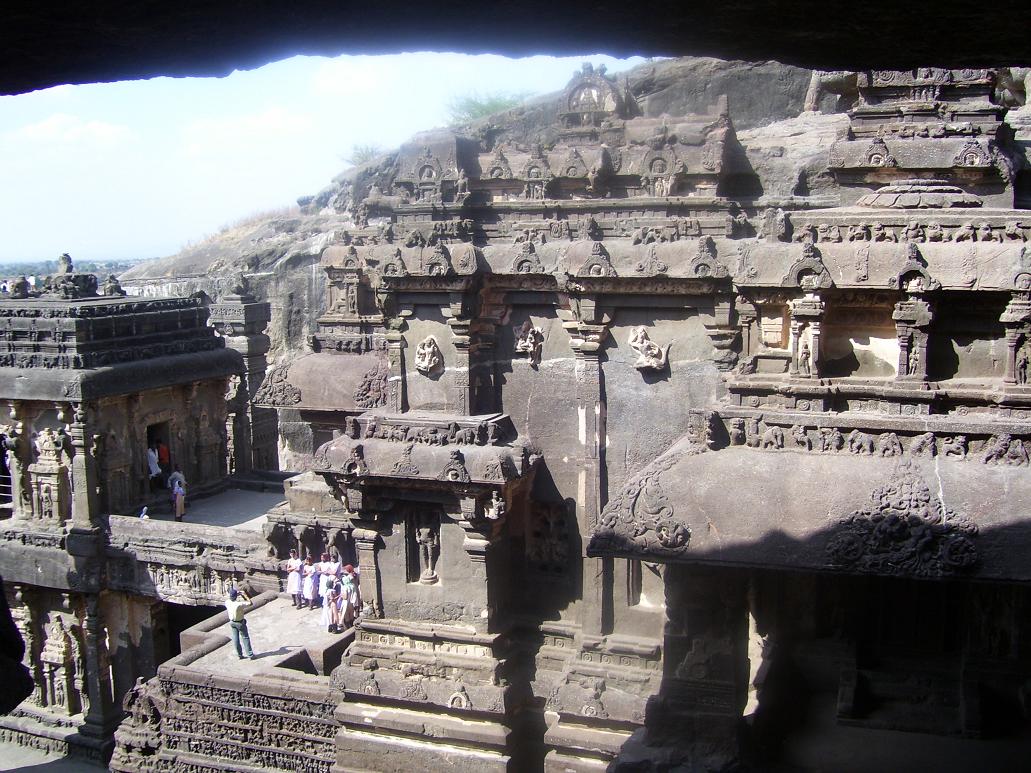ELLORA CAVES
 Author: STC
Author: STC
Article Date: 22.02.2014
Ellora, also called Verul or Elura, the corrupted form of the ancient name Elapura, is a world famous Indian heritage site, located 29 km North-West of the city of Aurangabad in the state of Maharashtra.
Build by Rashtrakuta dynasty the site is known for its monumental caves which represent the epitome of Indian rock-cut architecture. The site is a cluster of 34 cave structures excavated out of the vertical face of the Charanandri hills. Buddhist, Hindu and Jain rock-cut temples and viharas and mathas were build between the 5th century and 10th century. The 12 Buddhist (1-12), 17 Hindu (13-19) and 5 Jain (30-34) caves, built in proximity, demonstrate the religious harmony prevalent during this period. It is a protected monument under the Archaeological survey of India (ASI).
Although the actual and specific patronage of the caves is not known they were probably excavated during the seventh century, when the early western chalukyqs had achieved supremacy in the Deccan, though not necessarily in this region.
A number of Buddhist caves at Ellora seem to recapitulate some of the basic architectural and iconographic formats found at other sites, but others suggest innovative and advanced Buddhist thinking. Cave 5, the earliest Buddhist cave at Ellora, is a large rectangular hall, about 35 m in length, with surrounding small cells, a shrine in the centre of the rear wall, and two other shrine areas in the centres of the side walls. The expansion of the two side-shrine areas may be seen as a further development of the plan cave 6 at Ajanta although here, the main hall has become elongated. Both the rectangular, axial format and the addition of two cross-axis shrines are features that developed in Hindu monuments of the preceding century, such as the Shiva cave at Elephanta. The treatment of the pillars with their cushion capitals further suggests such a connection. The key feature in this cave is the double row of stone benches extending almost the full length of the halls, within the rectangle of pillars. Such benches are typical of the seating pattera used in ritual recitation in later Tantrism and Zen Buddhism outside of India and suggest that benches made of ephemeral materials might possibly have been used in 'Vihara' and 'Chaitya' type caves or free standing buildings for centuries, but that their memory is preserved only in the rock-cut examples at Ellora and Kanheri.
The vast scale and ambitiousness of the later Buddhist caves is seen in cave 12. It is a three story structure. Its plain and austere façade belies the richness of sculptural decoration within.
Each floor of the cave is different in plan and format. The main shrine on each floor contains the now familiar set of images.
With cave 12 at Ellora, Buddhist artistic activity in the western Deccan came to a virtual halt. The developments over the period of about two hundred and fifty years from the Vakataka resurgence to the creation of cave 12 at Ellora were rapid and dramatic.
The development in Buddhism as documented in these caves must have been extremely rich, fostered perhaps by an active lay patronage and nurtured by the suitable environment and context created in the monasteries themselves.
The rock-cut tradition itself was hardly over, for some of the most impressive of all rock-cut monuments were yet to be created in the service of the Hindu religion.